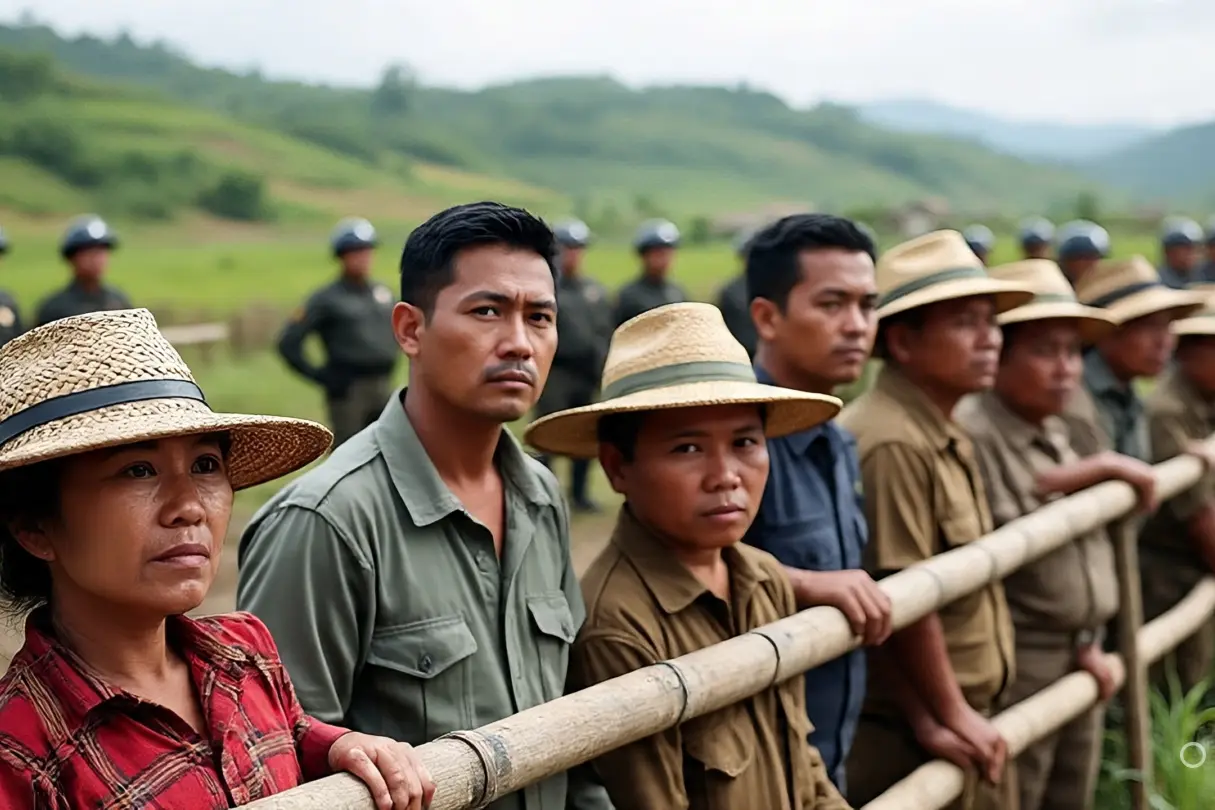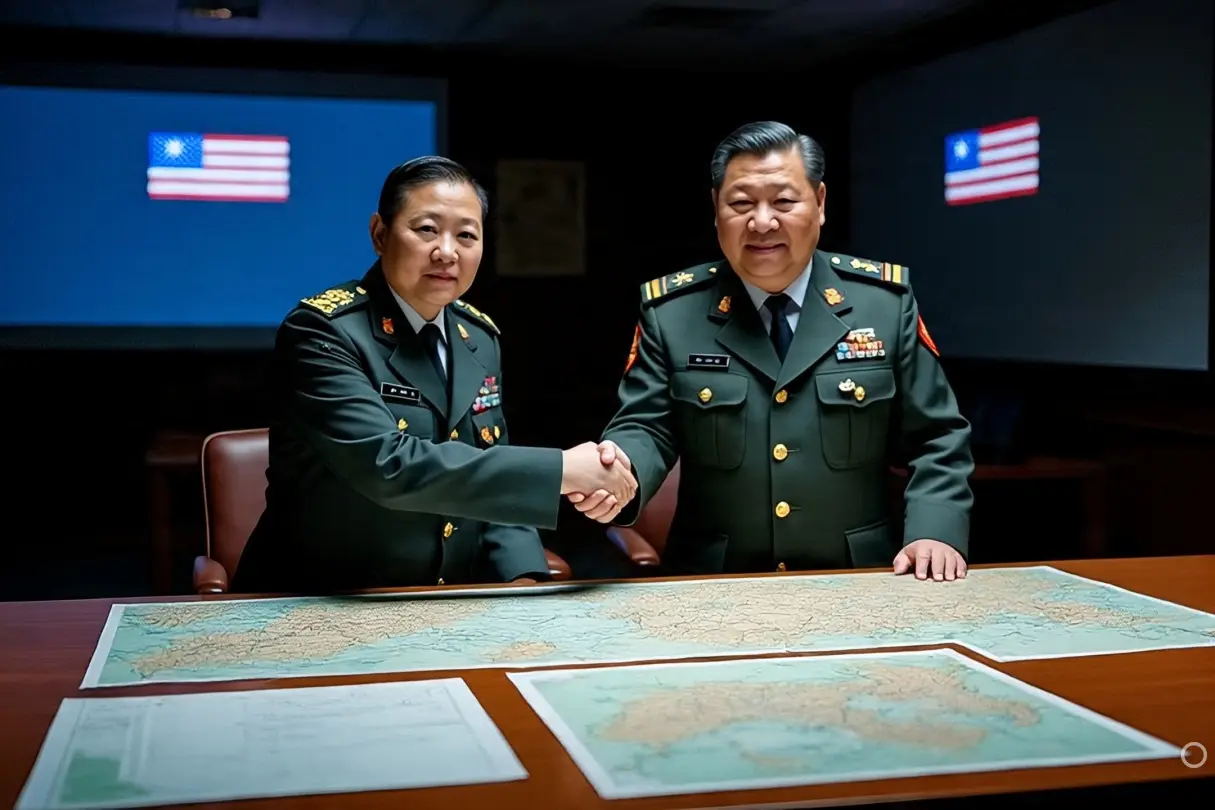🧨 What Happened in Hacienda Luisita?
On November 16, 2004, gunfire erupted in the sugarcane fields of Hacienda Luisita, a vast estate in Tarlac, Philippines. Seven striking farm workers were killed, hundreds injured, and dozens arrested after police and military forces broke up a weeks-long protest demanding fair wages and land distribution.
The protesters—mostly members of United Luisita Workers Union (ULWU) and Central Azucarera de Tarlac Labor Union (CATLU)—had blockaded a portion of the estate’s gate, calling for increased wages and an end to exploitative conditions. They were met not with dialogue, but with live ammunition, tear gas, and armored personnel carriers.
The massacre shocked the nation and became a flashpoint for deeper questions about land ownership, state violence, and the entanglement between political power and economic privilege.
👁️ The Conspiracy: Was It a Planned Execution?
Almost immediately, conspiracy theories began to circulate—suggesting that the violent dispersal wasn’t a clash that escalated out of control, but a pre-planned, government-sanctioned execution designed to protect elite landowners.
The central claim: that the massacre was orchestrated to suppress the growing land reform movement and to secure the interests of the Cojuangco-Aquino clan, the estate’s controlling family—one of the most politically influential in the country.
🕵️♂️ What the theory alleges:
-
The dispersal was deliberately timed to avoid media scrutiny and maximize impact.
-
The presence of military-grade equipment suggested advanced coordination.
-
Government forces allegedly received direct political orders to “clear out” the strikers by force.
-
Some point to the Aquino family’s political connections, including then-Defense Secretary Avelino Cruz and rising political figure Benigno “Noynoy” Aquino III, as factors in state protection of elite interests.
Supporters of this theory argue the massacre wasn’t a response to violence—it was a message to future dissenters that resistance would not be tolerated.
📑 What the Investigations Found
In the aftermath, multiple probes were launched, but no one was held fully accountable.
-
The Department of Justice and Congressional hearings conducted separate investigations but failed to produce any direct findings of premeditation or political orders to kill.
-
The National Bureau of Investigation (NBI) did conclude that excessive force was used and recommended charges against police and military personnel involved. But these cases were either dismissed or never pursued aggressively.
-
A fact-finding mission by human rights organizations noted signs of overkill: some victims were reportedly shot in the back, and shell casings suggested indiscriminate firing.
Despite public outcry and demands for justice, no high-ranking official or landowner was prosecuted. This perceived impunity only fueled belief in a cover-up.
📌 Key testimonies included:
-
Workers claimed that shots came from both sides of the gate, suggesting a coordinated flanking attack.
-
Survivors recounted being chased into fields and shot at while fleeing.
-
Officials insisted that they responded only after strikers turned violent—an assertion disputed by on-ground footage and independent observers.
⚖️ The Court Rulings and Legal Endgame
In 2011, the Supreme Court of the Philippines ruled to redistribute Hacienda Luisita lands to farm worker beneficiaries, stating that the original Stock Distribution Option (SDO) violated the spirit of agrarian reform. This was a major blow to the Cojuangco-Aquino estate.
While the decision marked a legal victory for farm workers, it did not address the massacre itself. The ruling focused on land reform—not accountability for the violence.
Critics pointed out the irony: President Benigno Aquino III, elected in 2010, campaigned on transparency and justice, yet his administration remained silent on calls to reopen the investigation. To many, this silence only reinforced the belief that the massacre was part of a broader elite protection strategy.
🧠 Why the Conspiracy Persists
In the absence of clear accountability, conspiracy theories often thrive. The Hacienda Luisita massacre fits a pattern familiar in Philippine history: a cycle of protest, repression, and impunity.
🎯 Factors keeping the theory alive:
-
Lack of convictions or justice for victims
-
Deep-rooted class divisions and historic land inequality
-
Opaque government processes and weak investigative outcomes
-
A growing distrust of institutions, especially among marginalized communities
Social media has only amplified these narratives. Activists, alternative media outlets, and grassroots groups keep the story alive, often framing the massacre as part of a systemic pattern of elite violence.
🧭 How Class and History Shape the Narrative
Whether or not a conspiracy was at play, it’s clear that the massacre symbolizes the darker side of Philippine land politics. For many Filipinos, Hacienda Luisita isn’t just a place—it’s a metaphor for how power operates in a country where a handful of families control vast resources and political networks.
The massacre reflects how state force is often aligned with elite interests, intentionally or not. The lack of clear answers—combined with generations of unfulfilled land reform—makes the conspiracy feel plausible, even if unproven.
At its core, the belief in a planned execution stems from lived experience: a history of being silenced, displaced, and betrayed.
🧠 And that’s the truth that endures—whether or not the theory holds up in court.




